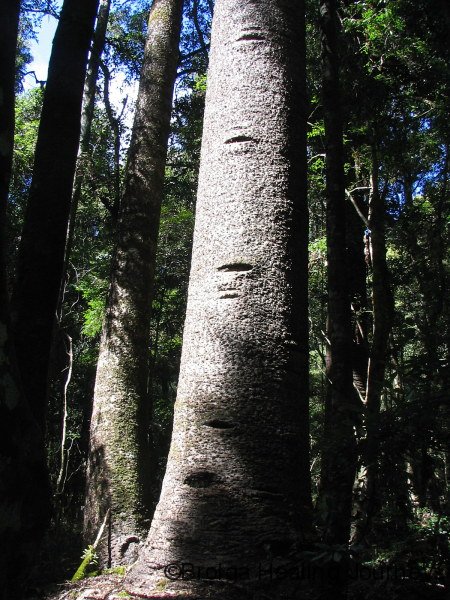Blog 2 – South Eastern Queensland, then we return to NSW – October 2007
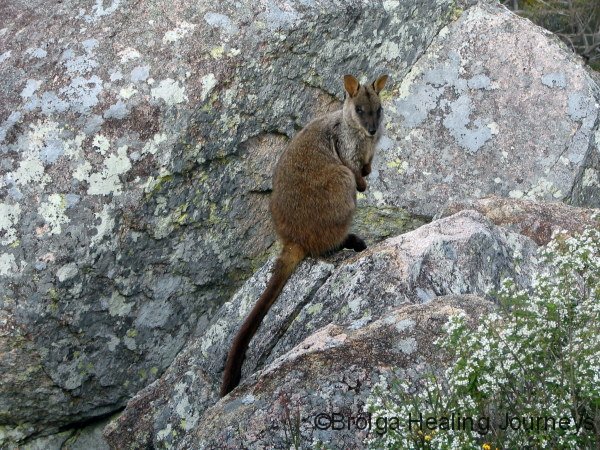
We’re not quite sure what happened. We had great intentions of updating the blog more regularly after a belated first entry. Then we blinked, and somehow nearly two months had passed!
So, where do we start. We are writing this entry in the Warrumbungle National Park after a day of torrential rain, with rivulets running through our campsite and at times our living area. This was followed, thankfully, by late afternoon sunshine that revealed sparkling clifftops through shrouds of mist. But we are getting ahead of ourselves.
Our last blog left off in Brisbane, at the start of September. We ventured from Brisbane to the Bunya Mountains, an area previously unexplored by either of us. On route to the Bunyas we visited Kilcoy and did our bit for the local economy in Luke’s Super IGA supermarket, a treasure trove of groceries, fresh produce and general supplies for our camping. If one chose where to live by the quality of the supermarket alone, we would be there in a flash.
The Bunya Mountains are south of Kingaroy, the latter famous for its peanuts and an erstwhile Premier of Queensland. Despite warnings about narrow steep roads and not towing vans or trailers into the mountains, we did just that, arriving to a night of heavy rain, which helped to “cure the canvas” on the camper trailer (in other words, we had a few leaks overnight). The next morning was clear and revealed a towering sub tropical rainforest. The majestic Bunya pines rose above the canopy built up mainly by Hoop pines, stinger trees and Moreton Bay Figs, along with numerous creeper vines.
We were intrigued by the region’s history. The Bunya trees produce huge seed cones (weighing up to 10 kilos) and the harvest peaks every third year. Before extensive logging in the region, the local Aboriginal people would invite tribes from many hundreds of kilometers around to this tri-annual harvest, and a feast would ensue. Some of the older trees show evidence of scarring where footholds were cut allowing the owner of a particular tree to climb and harvest the seeds. This practice ceased nearly a century ago as the traditional owners were driven away by logging.
Despite the obvious damage done by logging, both to the traditional culture of the region and the forests themselves, we had to admire the energy and tenacity of these early white settlers. The mountains are steep and rugged, and the bush thick, and bullocks were unable to haul logs down many of the hills. The loggers countered by building ‘shutes’ – furrows from the hilltops etched into the steep slopes – down which the logs were slid to the bullock teams waiting below. The scars of some of these shutes, from the 1800s, are still evident.
The life of the early settlers was hard. A steep climb down from our campsite revealed the peaceful, lonely grave of Gertrude Carbines, who died in childbirth while her husband rode on horseback 50 miles to Dalby in search of a doctor.
The mountains have an extensive network of walking trails, which we did our best to explore. The park is most famous for its stands of Bunya pines, and many of the walks concentrate on those areas, but some walks revealed quite different but no less beautiful terrain and habitats. The drier, northern region of the park revealed dramatic grass trees, many metres in height, clustered around a mountain top. Other walks explored dramatic escarpments on the western side of the mountains. The whole area is rich in wildlife, most notable being Whipbirds with their distinctive calls echoing throughout the forest, King Parrots and Crimson Rosellas, Kookaburras, Eastern Yellow Robins, Red Browed Finches, Double Barred Finches and Swamp Wallabies.
To view a short video which contains a recording of the song of the Eastern Whipbird, click on the following link:
httpv://www.youtube.com/user/brolgahealing#p/a/u/0/p8Uu-hDXy-s
We stayed in a bush campsite part way down the mountains, and were fortunate to have “Bushland Park” to ourselves for most of our stay; an idyllic setting we found difficult to leave.
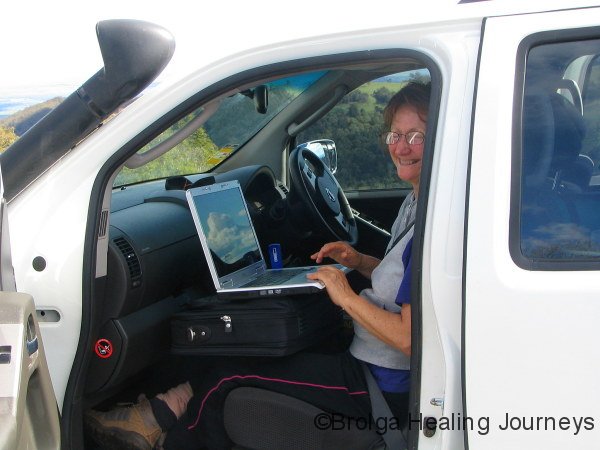
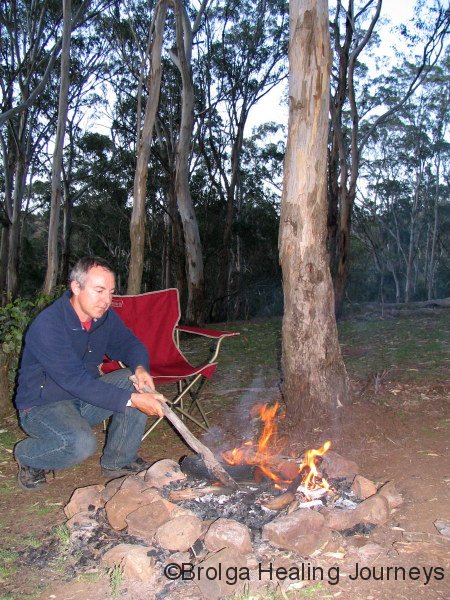
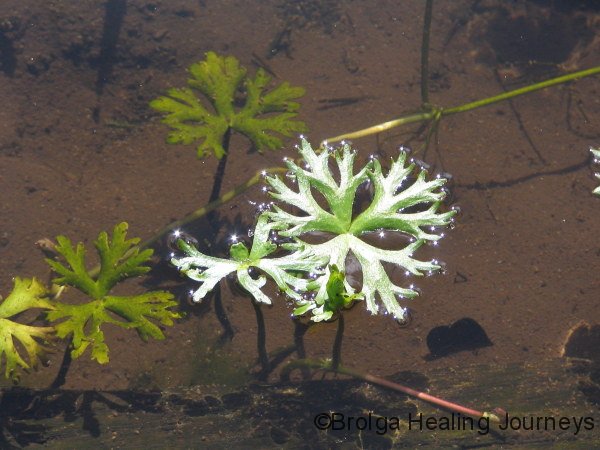
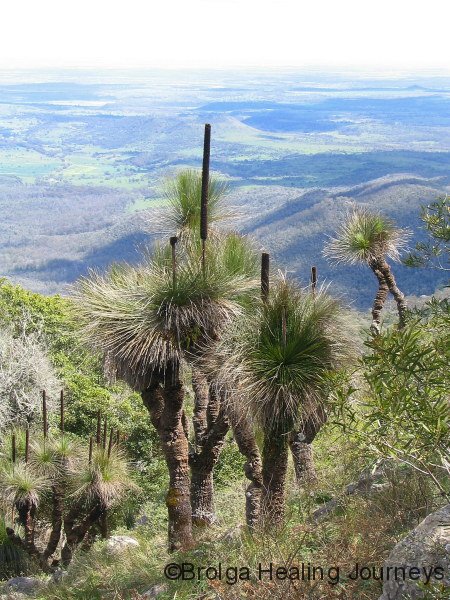
Next on the itinerary was Crows Nest National Park, in the region north of Toowoomba. The contrast between this region and the Bunyas – despite their relative closeness – was startling. Crows Nest features a deep gorge cut through granite country, with sparkling cliffs and an abundance of bottlebrush and grevilleas, along with the rare granite wattle, which was in flower. The national park is noted for its waterfall and cascades, but they were barely a trickle during our stay in the drought-stricken region. The larger waterholes, however, held plenty of water. The wildlife in the park was a joy – the Noisy Friarbirds lived up to their name, especially in a grove of grevilleas in full bloom, we were thrilled to see many of the endangered brush-tailed rock wallaby and the campsite was frequented by inquisitive brush turkeys. Peter was also very proud to find a koala on one of his many bushwalks.
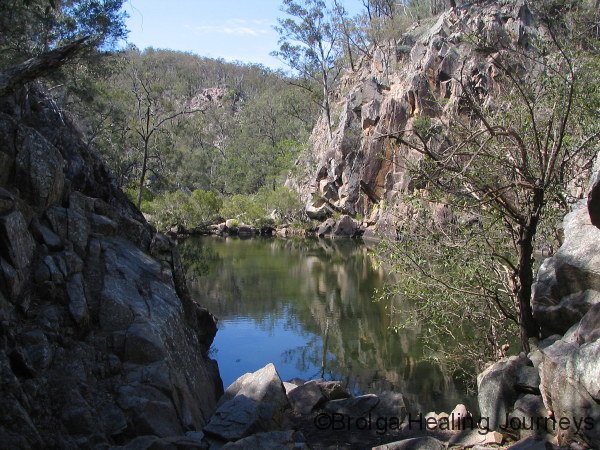

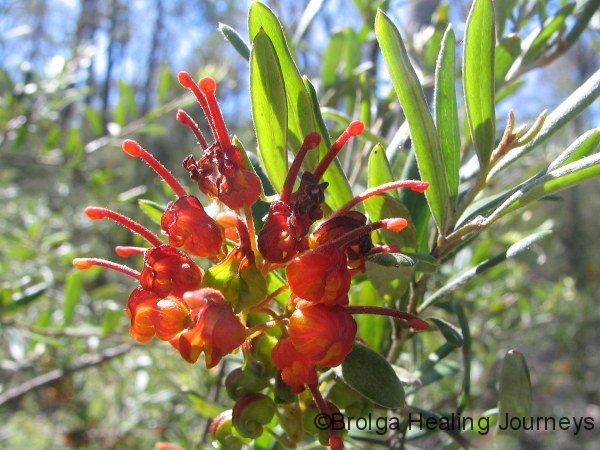
As we left Crows Nest, Nirbeeja set aside our Sat-Nav and offered to navigate our return to Brisbane. Peter reluctantly agreed to her request in the interests of harmonious travel. Nirbeeja successfully guided us to Ravensbourne National Park for some bushwalking amongst towering Sydney Blue Gums and valleys of palm trees. Nirbeeja was thrilled there to see her first whipbird, for despite their loud and frequent calls, they are a particularly elusive bird, rarely staying long in one place.
From there, her navigation skills were to be tested as we drove on to Brisbane. Peter grew more and more concerned as we took some bewildering changes of direction until, at last, Nirbeeja exclaimed “We’re here” as we pulled into the parking area of ……… Luke’s Super IGA at Kilcoy!! Half an hour of retail therapy calmed Peter’s shattered nerves and we left, replete with goodies.
Our return to Brisbane enabled us to catch up again with Bev and Les and their family, to spend some time with the newlyweds Lisa and Mark who had returned from their honeymoon in Thailand, and to stay with Lisa’s mother Lynn and her husband Greg in their beautiful home in Sandstone Point on the northern shore of Deception Bay, an idyllic setting. This stay on the coast heralded a sea change of sorts, for a month or so, in our journey.
We travelled south to stay with Peter’s uncle Ray and his wife Kerrie Anne, at Chinderah, in their beautiful home on the banks of the Tweed River. Ray took us to Fingal Head, where he promised sightings of whales and dolphins. True to his word, we saw both, with dolphins performing exhilarating surfing maneouvers in the waves below the headland, and whales visible in the distance.
From there we ventured south and inland to near Coraki to stay with Nirbeeja’s brother John and his wife, Norma and caught up with most of their family. John and Norma live in an old former schoolhouse (removed to the present site from the local area) on a large country property. John took some days off work to spend with us, which we appreciated, as we do not get to see them very often. We had a dinner at the Déjà vu Restaurant in Coraki with the clan and a good night was had by all!! Some very nice reds were consumed.
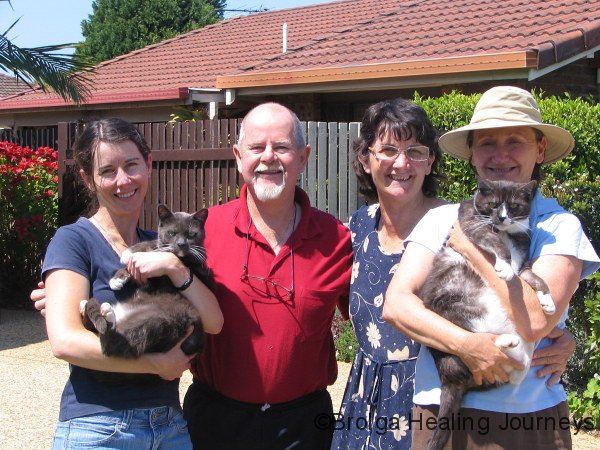
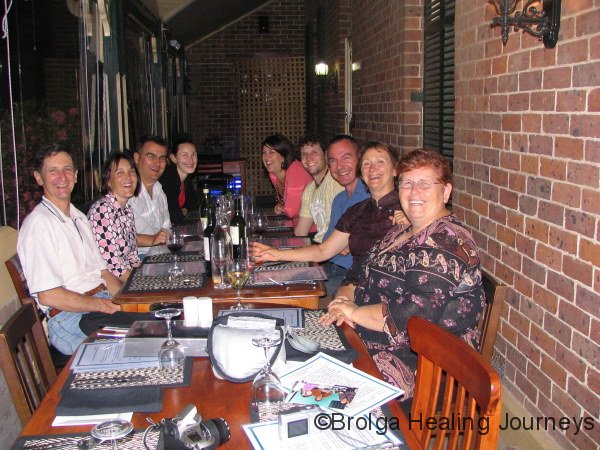
Then back to the coast and onto Moonee Beach to stay with our friends KantiRatna and John. Nirbeeja lived in the yoga ashram with Kanti many years ago and was at the home-birth of her son Shyam, who is now a strapping 18 year old. Kanti & John live in a beautiful home backing onto a nature reserve and surrounded by a lovely terraced garden of tall gums and various native shrubs planted by Kanti and John. We were fortunate enough to have a campsite on a terrace in their garden and dined with them each evening.
We travelled inland to Dorrigo National Park for a day’s bushwalking with Kanti through rainforests on the edge of the escarpment; an invigorating day spent in beautiful surroundings. We loved our time in the Coffs region, where we also walked around the headlands of the Moonee Beach Nature Reserve, and out to Muttonbird Island Nature Reserve from the town.
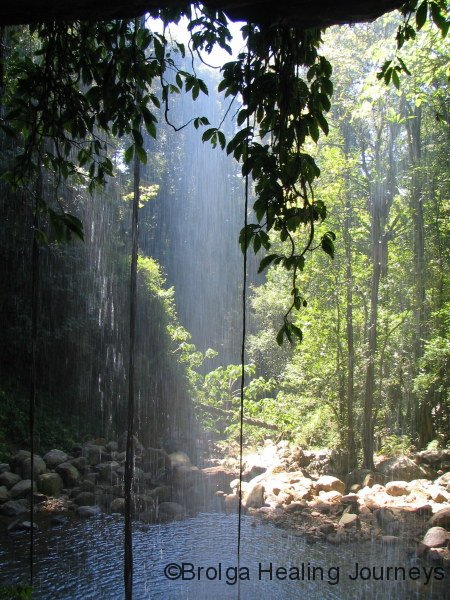
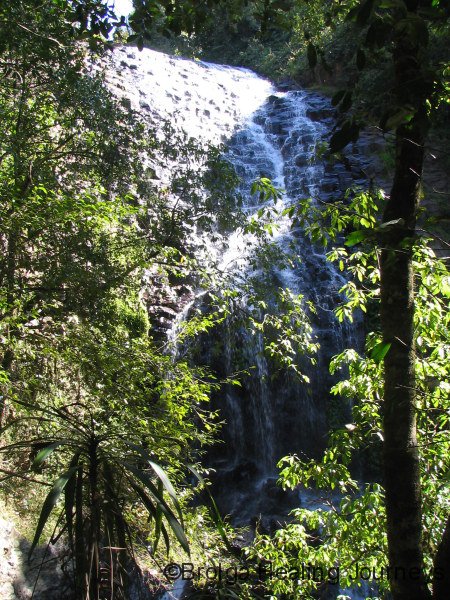
Further down the coast, we stayed at Valla Beach with our friends Barb and Dave, and their 3 boys. Another beautiful spot, with the camper trailer set up in their garden, and a short walk to the beach. We had the first swim of our travels here, in the crystalline (and surprisingly warm) waters of Valla Beach. We were also treated to a dramatic display of tail and fin slapping by a number of whales, and several complete breaches. We were again blessed with an abundance of birdlife – with parrots and honeyeaters galore (including the Scarlet and New Holland Honeyeaters), black cockatoos and osprey.
We also spent an afternoon with our hosts inland, at the aptly named Promised Land region near Bellingen, where some of the party were brave enough to plunge into the cold but crystal clear waters (though not your authors!). Peter was thrilled during our stay when Dave accompanied him on a climb of Picket Hill (hill? – more like a mountain!), a local sacred site for mens’ business for the traditional owners.
The intriguingly named Hat Head National Park was our next stop. We stayed in a lovely grassed camping area surrounded by huge sand dunes, prostrate, sweetly scented banksias and wild surf which we braved. The camping grounds were frequented by kangaroos (including a particularly amorous male who constantly harassed the only adult female, already with joey in pouch and no doubt a jelly-bean-like embryo in-waiting!), kookaburras, pied butcher birds and goannas. The morning and evening songs of the birds were a treat (though Peter complained about the 5am start). Nirbeeja, ever vigilant with binoculars in hand and neck craned skywards, also noted Fig Birds, Spangled Drongos and White-headed Pigeons.


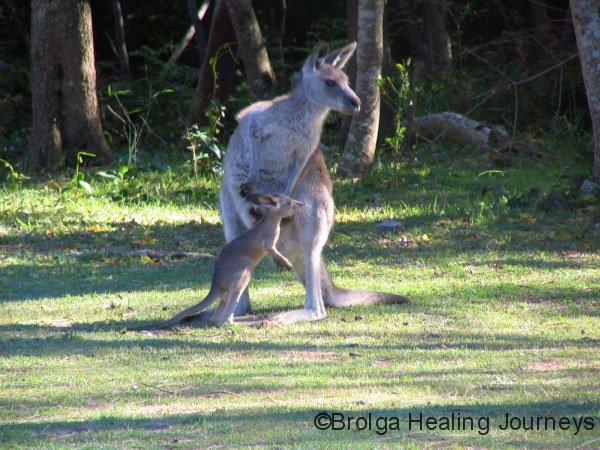
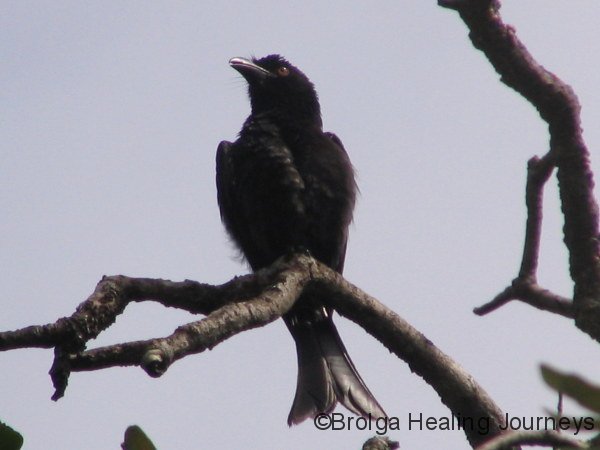
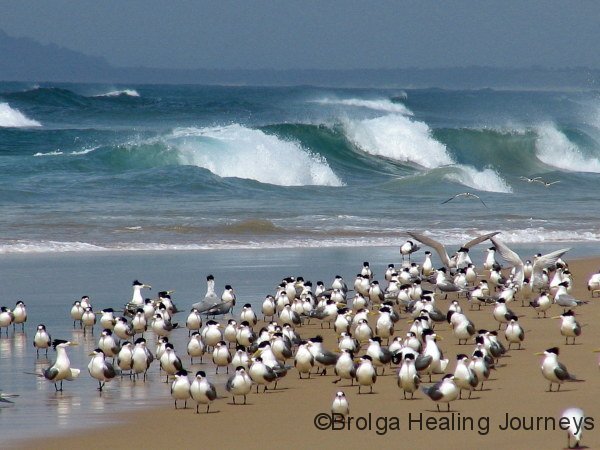
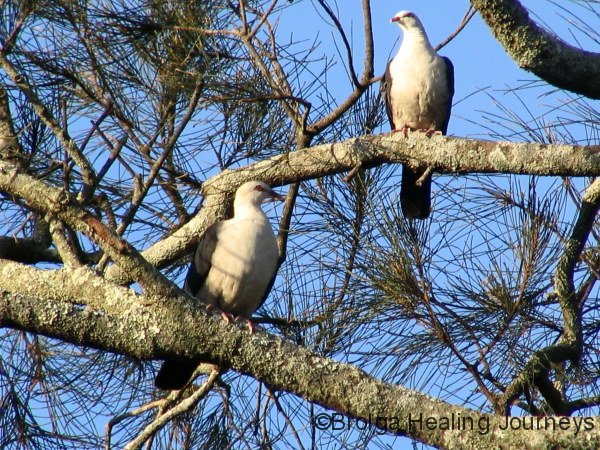
One afternoon we watched as a huge goanna was chased by a butcher bird and made its getaway via one of the toilet sheds. We are happy to report that no human (especially not us) was in situ at the time.
Hat Head features some of the most spectacular headlands we have seen. We were admiring the view on our first afternoon there, when we were treated to the awesome sight of a whale and her baby swimming close to the headland, with the mother supporting the obviously tired calf. Life does not get much more thrilling than this!
Barb and Dave from Valla Beach and their son Sam, spent a day with us at Hat Head and we shared further whale sightings.
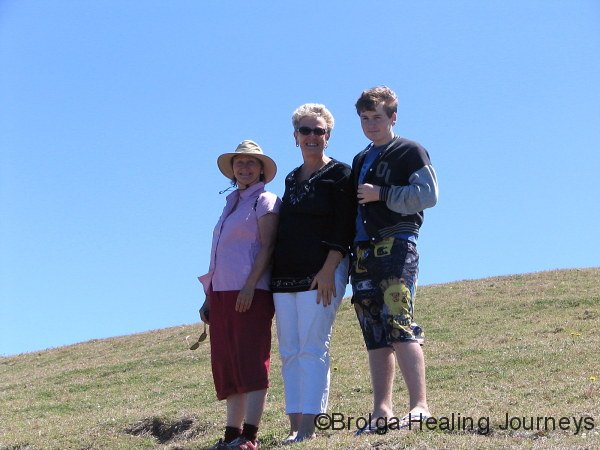
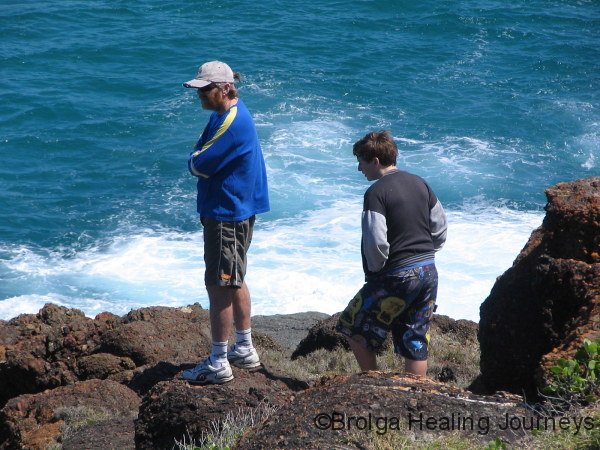
We continued our journey down the coast, staying next at the Indian Head camping ground in the Crowdy Bay National Park. How many spectacular headlands can one cope with in a lifetime?! Pounding surf against the rocks, wild winds at night, many species of banksias and wildflowers, beautiful wild beaches (more swimming took place), more kangaroos than you can poke a stick at, goannas, a shortish, stocky snake (death adder?), a flock of red-tailed black cockatoos returning each evening to roost in the trees behind our campsite, and even noisy teenagers one evening – it had it all!! Peter was also thrilled to find an abundance of Fringed Violets in full bloom in the nearby bush.
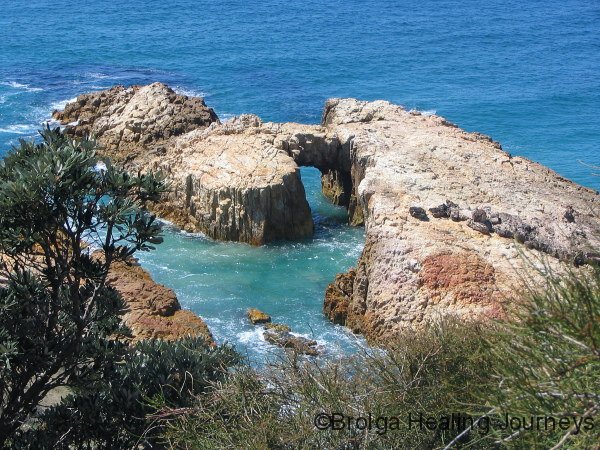

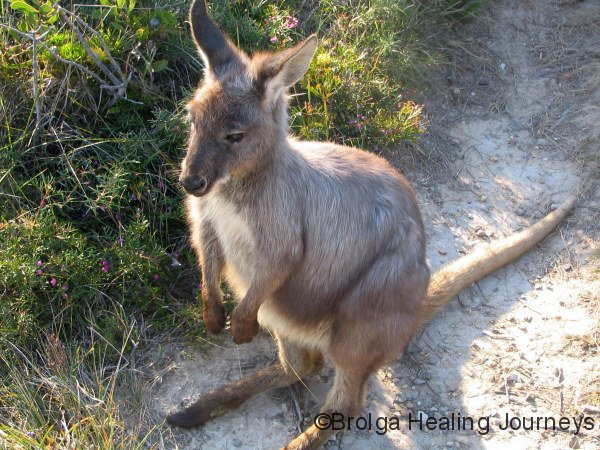
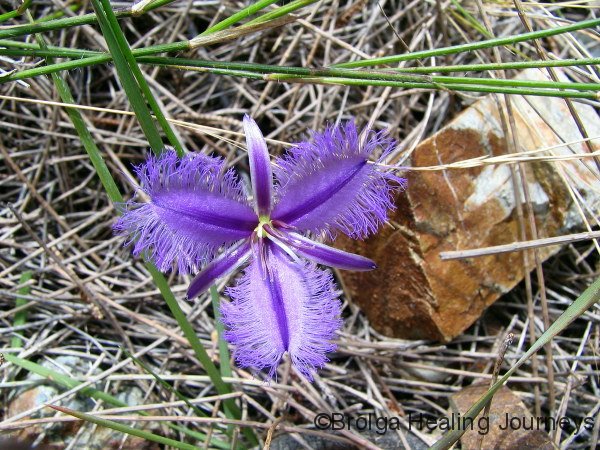
We were adopted at our campsite by a gorgeous little wallaby that had, according to the local ranger, been released in the park by some misguided “turkey”. This wallaby comes from out west and has none of his own kind in Crowdy Bay, and was obviously very humanised. He followed Peter on a walk around the headland, allowing Peter to walk 10 to 15 metres ahead and then bounding up behind him, skidding to a halt each time. Whilst he was adorable, we felt deeply for this little fellow, whom we named Kyle, whose future in the park is uncertain.
The area is famous for being the one-time residence of Australian author Kylie Tennant. A small hut built for her in the 1940s by a local property owner has been restored in the park. Tennant’s novel, The Man on the Headland, was written about the area and, in particular, about the man who built the hut; a colourful old bush character. We were fortunate to be loaned the book, and the descriptions of the region and its history added tremendously to our experience there. It was quite uncanny to read about the very paths we were treading, and to know that in many ways little had changed.
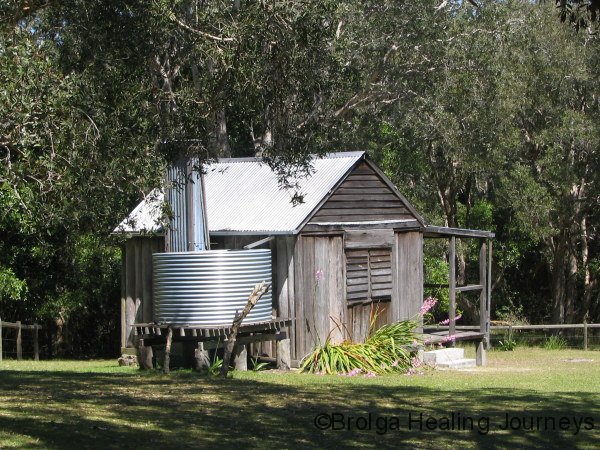

Peter held some consultations in the area, and taught a Homoeopathic First Aid Course on a beautiful property near Moorland, with the South Brother Mountain as the backdrop– a dramatic local landmark. Rebbekah from West Wyalong, who had organized the first aid course at her property at the beginning of our journey, grew up in the Port Macquarie region and it was her family and their friends for whom this course was held. Thanks Rebbekah for making the connection for us!
Enough of the coast, beautiful though it was, it was again time to head inland and towards the red centre. Yay!
We drove inland from Port Macquarie along a winding but spectacular road up the escarpment, stopping at the town of Walcha, which we both found enchanting. Our first night away from the coast was camped beside the river, next to the showground in Bendemeer. The following day took us through picturesque rolling hills to Tamworth (yeehaa), with its surprisingly leafy and pretty main street. We continued on through Coonabarabran to the Warrumbungle National Park, which we are pleased to report lived up to all reports of its beauty.
We have been in this park for a few days now and between rain and thunderstorms we have managed several bushwalks – notably Fan’s Horizon, Gould’s Circuit and the Belougery Split Rock walk - each giving magnificent views of the famous, eroded volcanic formations that form the Warrumbungle range.


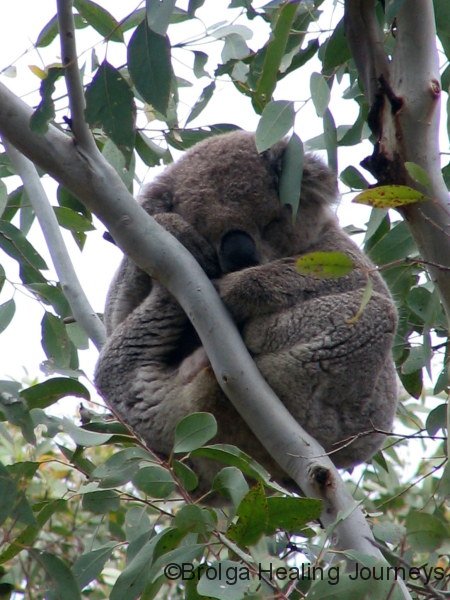
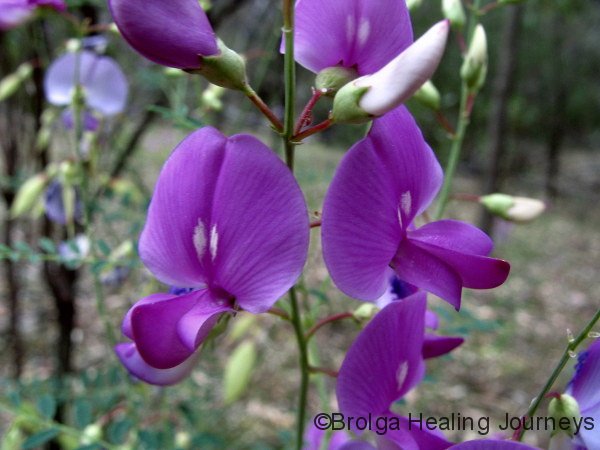
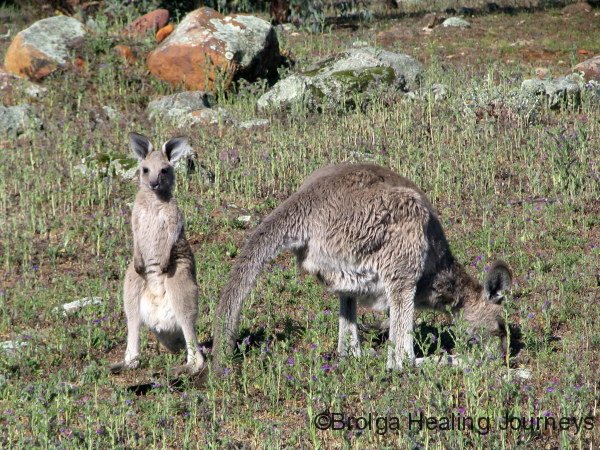
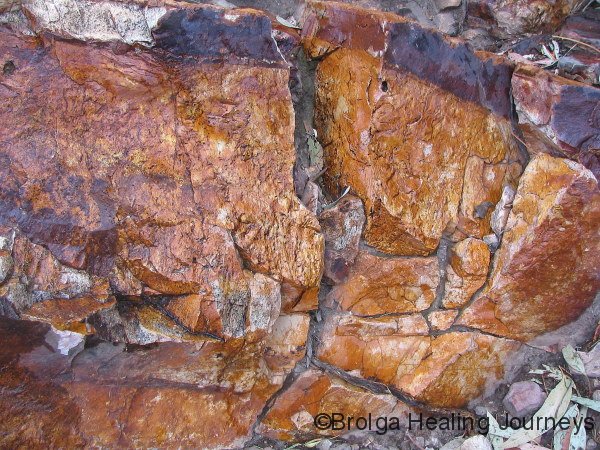
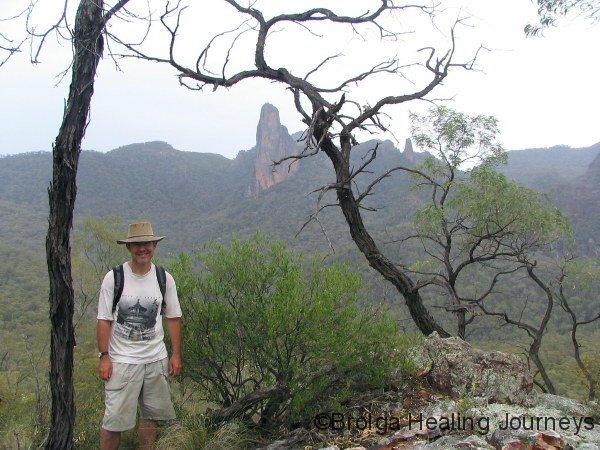
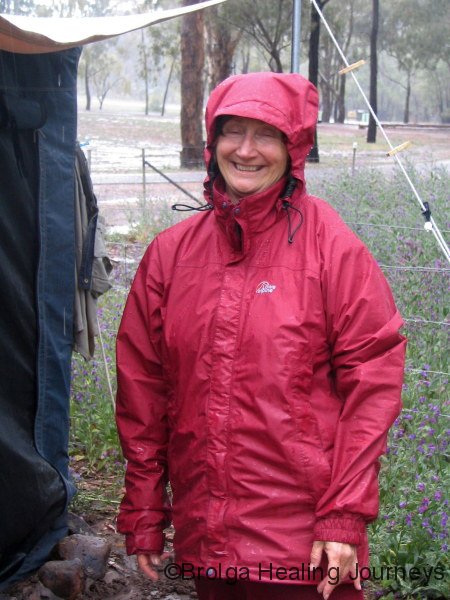
We look forward to exploring further when the weather clears.
Till next time! Peter & Nirbeeja
26 October 2007

